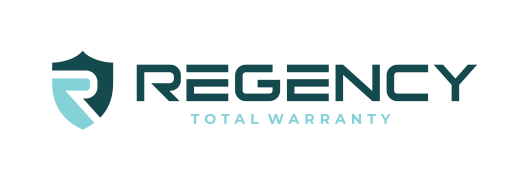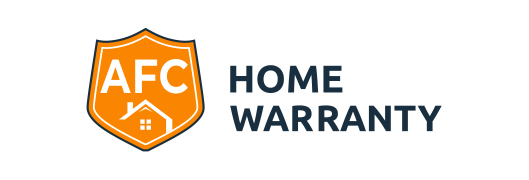Investing Disclaimer
401(k) Calculator: Simplify Your Retirement Planning
Enhance your retirement strategy with our 401(k) calculator—an essential tool to simplify your retirement planning. Considering factors such as age, contributions, and returns, the tool offers insights to establish a stable financial future. Uncover the potential growth of your 401(k) to guide your path toward a secure retirement
Estimated 401(k) Balance At Retirement
Total employee contributions
Total employer contributions
| Age | Employee Contributions | Investment Return | Balance Without Employer Match | Employer Contributions | Balance With Employer Match |
|---|
How To Use This 401(K) Calculator
A 401(k) calculator is a valuable tool for retirement planning. To make the most of it, follow these steps to understand its functions, inputs, and outputs:
Parameters Required To Calculate:
Understanding the input variables is crucial for using a 401(k) calculator effectively. Here's a brief description of each of these variables and how they play a role in the calculation:
- Annual Salary:
Your yearly income is a key factor in determining how much you can contribute to your 401(k) and how your account grows. - Monthly 401(k) Contributions:
This refers to the money you regularly set aside from your monthly income for your 401(k) account. This directly influences your annual contributions and overall savings for retirement. - Annual Salary Increase:
Estimate the percentage growth in your income over time to understand how it impacts your savings potential. Enter your projection for personalized financial planning. - Current Age:
Your current age establishes the starting point for your retirement savings plan and helps determine your years until retirement. - Retirement Age:
The age at which you plan to retire, defining the duration of your 401(k) investment and savings period. - Annual Rate of Return:
The expected yearly growth rate of your 401(k) investments, affecting the total value of your account at retirement. - Current 401(k) Balance:
The money saved in your 401(k) account is the starting point for your investment growth. - Employer Match:
The percentage of your yearly 401(k) contributions that your employer will match. - Employer Match Limit:
The maximum percentage or amount your employer is willing to match, capping the additional contributions they provide.
Factors Displayed In The Result
Understanding the output variables in the 401(k) calculator results is essential for assessing retirement readiness. Here's a brief description of each variable and what the final numbers mean in terms of your retirement preparedness:
- Estimated 401(k) Balance At Retirement:
This represents the projected total value of your 401(k) account when you reach your specified retirement age. It's a crucial indicator of whether your savings will be sufficient to support your desired lifestyle during retirement. - Total Employee Contributions:
This figure signifies the total amount you will have contributed to your 401(k) account throughout your career. It's important because it reflects your savings efforts and how much you have invested in your retirement. - Total Employer Contributions:
This represents the cumulative sum of all the contributions made by your employer to your 401(k) account. Your employer provides additional savings that can significantly boost your retirement funds.
The retirement projection in a 401(k) calculator outlines a roadmap for future savings, offering insights into potential financial scenarios. It tells you how much money you might have when you retire. This simple breakdown helps you see the big picture of your retirement plans and makes it easier to decide what to do with your money.
Using What-if Scenarios in 401(k) Planning
You can experiment with various scenarios in a 401(k) calculator to better understand how different factors can impact retirement savings. By running multiple scenarios, you can be prepared for uncertainties and ensure they are on the right path to achieving their retirement objectives.
The value of running multiple scenarios lies in providing a more comprehensive perspective on retirement planning:
- Plan Your Way:
Testing different scenarios means you can plan your 401(k) to fit your situation and what you want to achieve with your money. - Understand Risks:
Trying out different situations helps you see how risky or safe your choices are for your retirement savings. You can determine what changes in contributions, retirement age, and investment returns mean for your money. - Match Your Goals:
When you experiment with scenarios, you make sure your 401(k) plan matches what you want to do with your money. Whether hitting a specific age to retire or reaching a certain savings goal, testing scenarios help you fine-tune your plan to meet your goals. - Smart Choices:
By exploring different options, you learn how your current choices affect your money later. This knowledge helps you make smart decisions and adjustments to prepare for a secure retirement.
What to Know About 401(k)s
Understanding the fundamental concept of 401(k) plans and their significance in retirement planning is crucial before using a 401(k) calculator.
- What is a 401(k)?
A 401(k) is a tax-advantaged retirement savings account many employers in the United States offer. It allows employees to set aside a portion of their pre-tax income, which is invested and grows over time.
- Employee Contributions
You contribute a portion of your salary to your 401(k) account. This deduction is done from your paycheck before taxes, reducing your taxable income.
- Employer Matching
Many employers offer a matching contribution, where they add money to your 401(k) account, typically based on a percentage of your contributions. It's essentially free money for your retirement.
- Tax Benefits
Your 401(k) earnings grow tax-deferred, meaning you pay taxes upon withdrawal. Contributions reduce your current taxable income, potentially lowering your tax bill. Consider your tax rate and account for the impact of inflation in your retirement planning.
Example :
If your yearly income is $60,000 and you decide to contribute $6,000 to your 401(k), you effectively exclude $6,000 from state and federal income taxes in that tax year. In a hypothetical 25% combined state and federal tax bracket, this contribution would result in a $1,500 reduction in your overall tax liability for the year. This illustrates how strategic 401(k) contributions can yield significant tax benefits.
- Investment Options
401(k) accounts offer various investment options, such as stocks, bonds, mutual funds, etc. Understanding and choosing investments that align with your risk tolerance and retirement goals is essential. Additionally, you can consider Individual Retirement Accounts (IRAs) for investment flexibility.
- Contribution Limits
The IRS sets annual contribution limits, so you can contribute a maximum amount each year. Exceeding these limits can result in penalties. As of the latest update, the contribution limit for employees participating in 401(k), 403(b), most 457 plans, and the federal government's Thrift Savings Plan has been increased to $22,500, up from $20,500.
- Early Withdrawal Restrictions
401(k)s are designed for long-term retirement savings. Funds are intended for use in retirement, and there are penalties for early withdrawals (before age 59½).
- Retirement Age
The age you pick for retirement is essential. It determines when you'll begin using your 401(k) savings, how long you'll continue adding money, and when you'll start withdrawing funds.
- Compound Returns
Compound returns mean it grows from your contributions and the earnings it has already generated. Starting early and staying committed lets this growth happen gradually.
- Rollovers
If you switch jobs, you can transfer your 401(k) funds to a new employer's plan or an Individual Retirement Account (IRA). This keeps your savings intact and maintains the tax advantages.
- Distributions
Navigating 401(k) distributions involves understanding their taxable nature unless rolled over. Optional tax methods for lump-sum distributions provide flexibility, while eligibility for withdrawals hinges on specific events such as death, disability, severance, plan termination, reaching age 59½, or financial hardship. Staying aware of these conditions is vital for strategic and timely distribution planning
Understanding these fundamental 401(k)s concepts is essential because it lays the groundwork for informed retirement planning. Before using a 401(k) calculator, you should be familiar with these basics to use the tool effectively and work toward a financially secure retirement.
Tips for Maximizing Your 401(k) Savings
To make the most of your 401(k) savings and secure a comfortable retirement, consider these practical strategies:
- Contribute up to the Match:
At least enough to your 401(k) to capture the full employer match. It's free money that can significantly boost your savings.
- Increase Contributions Annually:
As your income grows, consider increasing your 401(k) contributions. Even small annual adjustments can lead to substantial long-term savings.
- Take Advantage of Catch-Up Contributions:
If you're 50 or older, you can make catch-up contributions in addition to the regular annual limit. This allows you to save even more as you approach retirement.
- Diversify Investments:
Choose an investment that suits your needs and long-term goals. Spread your money across different types of investments to lower risk. Also, you may explore an investment calculator to understand how your money can grow over time based on the rate of return and investment duration.
- Review and Rebalance Regularly:
Periodically review and rebalance your investment portfolio to maintain your desired risk profile and ensure it aligns with your retirement timeline.
- Avoid Early Withdrawals:
Steer clear of withdrawing money from your 401(k) before retirement age. Early withdrawals often come with penalties and can jeopardize your retirement security.
- Understand Fees:
Be aware of the fees associated with your 401(k) investments. Lower-cost options can significantly impact your long-term returns.
- Consider Roth 401(k) Contributions:
Depending on your financial situation, Roth 401(k) Contributions may be beneficial. While they don't provide immediate tax benefits, qualified withdrawals in retirement are tax-free.
- Plan for Required Minimum Distributions (RMDs):
After age 72, you must take annual RMDs from your 401(k).
- Keep an Eye on Legislative Changes:
Stay informed about changes in tax laws and retirement regulations that may affect your 401(k) savings and retirement planning.
By implementing these tips, you can maximize the potential of your 401(k) savings, ensuring you're on track for a financially secure retirement.
Reviewing And Adjusting Your 401(K) Plan
Periodically revisiting and adjusting your 401(k) plan is essential as your financial situation evolves. Here's why it's crucial and how life events, income changes, and market fluctuations can influence your savings strategy:
- Life Events:
Significant life events like getting married, having children, buying a home, or sending kids to college can impact your financial priorities. These events may require adjusting your 401(k) contributions or investment strategy to align with new goals and expenses. - Income Changes:
As your income grows or fluctuates, your ability to save more for retirement may change. A salary increase boosts your 401(k) contributions and accelerates your retirement savings. - Market Fluctuations:
Economic conditions and investment markets are dynamic. Periodically reviewing your 401(k) helps you adapt to market fluctuations and adjust your investment strategy if necessary. It's crucial to avoid making knee-jerk reactions and maintain a well-balanced and diversified portfolio. - Retirement Goals:
Over time, your retirement goals may evolve. You might decide to retire earlier or later, change your desired retirement lifestyle, or set new financial objectives. Adjusting your 401(k) plan can help you stay on track with these evolving goals. - Regulatory Changes:
Tax laws and retirement regulations can change over time. Staying informed about these changes allows you to adjust your 401(k) plan strategically, potentially taking advantage of new opportunities. - Rebalancing:
Regularly rebalancing your 401(k) portfolio ensures that your asset allocation aligns with your risk tolerance and objectives. This helps you manage risk and maximize returns. - Retirement Income Planning:
As retirement approaches, it's essential to transition from an accumulation phase to an income phase. This involves considering how you'll generate income from your 401(k) in retirement and may require adjustments to your investments and withdrawal strategy.
By reviewing and adjusting your 401(k) plan in response to these factors, you can ensure that your retirement savings strategy remains aligned with your current financial situation and long-term goals. Periodic assessments help you make informed decisions and adapt to the changing landscape, ultimately increasing your chances of a secure and comfortable retirement.
Frequently Asked Questions (FAQs)
How Accurate Is Your 401(K) Calculator?
The accuracy of our 401(k) calculator varies depending on the quality of the input data and the dynamic nature of financial markets. While it provides valuable estimates for retirement planning, real-world factors like market volatility, life changes, and unknown future events can impact the precision of the projections.
How Much Should I Contribute To My 401(K)?
The ideal contribution to your 401(k) depends on your financial goals and circumstances. A standard guideline contributes at least enough to capture the full employer match, as it's essentially free money. Beyond that, consider contributing 10-15% of your income to build a substantial retirement fund.
Are There Tax Benefits On 401(K)?
Yes, there are tax benefits associated with 401(k) plans. Contributions are tax-deductible, reducing taxable income, and investment gains grow tax-deferred. While you'll pay taxes when you withdraw funds in retirement, these benefits help you save and grow your retirement savings more efficiently.
Who Is Eligible To Contribute To A 401(K) Scheme?
According to the Internal Revenue Service (IRS), to be eligible, you usually need to be an employee of a company that offers a 401(k) plan. While part-time and full-time employees may be eligible, certain categories of workers, such as independent contractors, may not have access to a 401(k) plan through their employer.
Can I Use A 401(K) Calculator For Other Retirement Accounts?
A 401(k) calculator is designed to project retirement savings within a 401(k) account. Due to differences in rules, limits, and tax treatments, it may need to accurately project savings for other retirement accounts like IRAs or 403(b) plans.
To effectively plan for various retirement accounts, it's best to use calculators or tools customized to each account type or consult a financial advisor for personalized guidance.
Are There Different Types Of 401(K) Calculators?
Yes, there are two main types of 401(k) calculators - traditional and Roth 401(k). These calculators are essential for individuals to evaluate and enhance their retirement savings based on their selected 401(k) contribution type.
How Often Should I Use A 401(K) Calculator?
The frequency of using a 401(k) calculator depends on your unique financial situation. As a general guideline, an annual check-in is advisable to assess progress and make adjustments. Consider more frequent use during major life events, market shifts, or as you approach retirement to ensure your savings align with your goals.
What If I'm Not Satisfied With The Results From Your 401(K) Calculator?
If you're dissatisfied with your 401(k) calculator results, review your input data for accuracy and consider more realistic assumptions. Consult a financial advisor for personalized guidance, make necessary adjustments to your savings plan, and regularly reevaluate your retirement strategy to ensure it aligns with your evolving goals and circumstances.
What's The Difference Between A Pension Plan And A 401(K)?
The primary distinctions between a pension plan and a 401(k) plan lie in funding, control, and retirement income. Pension plans are employer-funded and guarantee a fixed income, while 401(k) plans involve individual contributions and investment control.
Our top 3 picks

Regency Total Home Warranty



